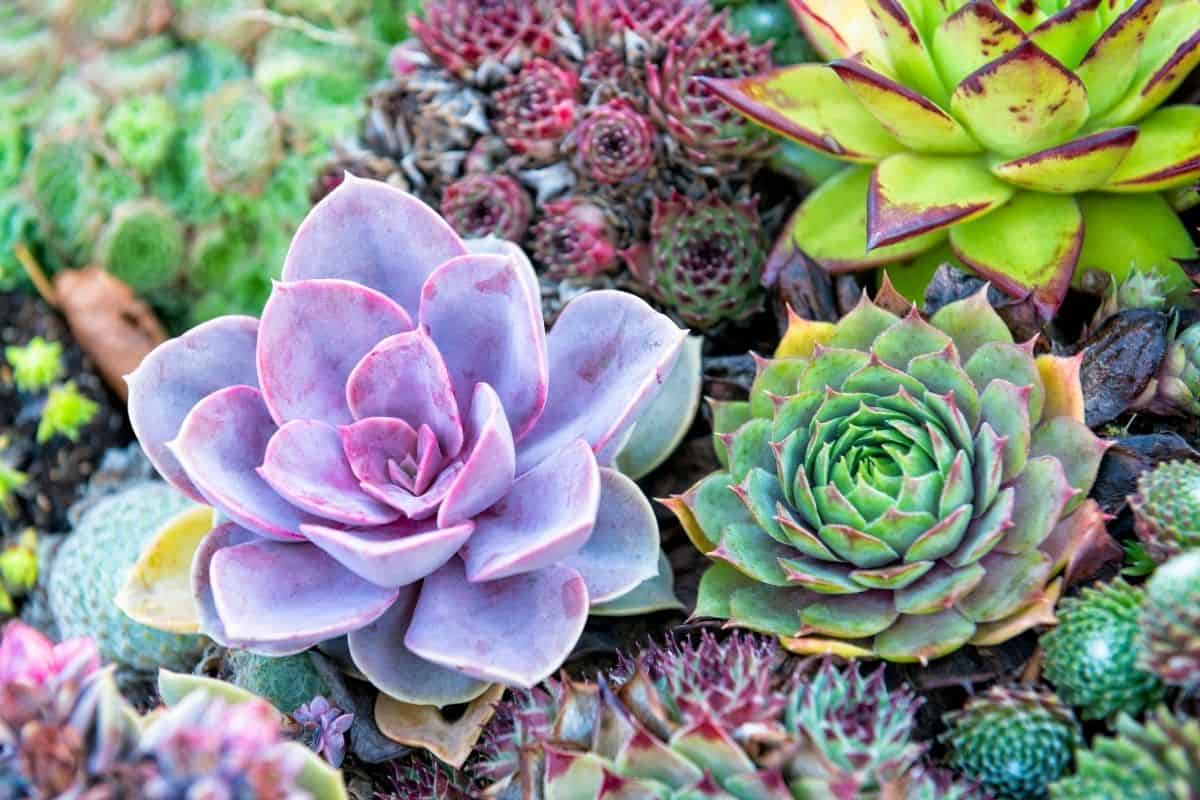
What makes a succulent different from other types of plants? As succulents continue to grow in popularity, more gardeners are wondering what makes their favorite fat plants stand out from the crowd. Succulents differ from other types of plants in terms of both physical characteristics and environmental needs. These distinctive features make succulents and cacti unique in the world of plants.
Related Article: What To Plant Succulents In
Characteristics
The most notable characteristic of succulent plants is their thick, fleshy leaves or stems. Succulent plants store water in these structures, so they tend to be thicker than those of other types of plants. This characteristic has led to the nickname ‘fat plants’ which accurately describes the fleshy leaves and stems of succulents.
Succulents owe much of their popularity to their ability to survive harsh conditions. This makes them low maintenance houseplants that can be successfully grown by even novice gardeners. Though there are a few species that require specific care in order to thrive, most can grow well with a healthy dose of neglect. Unlike plants that are native to tropical areas, succulents will do just fine if you forget to water them or leave them for a week while you’re on vacation.
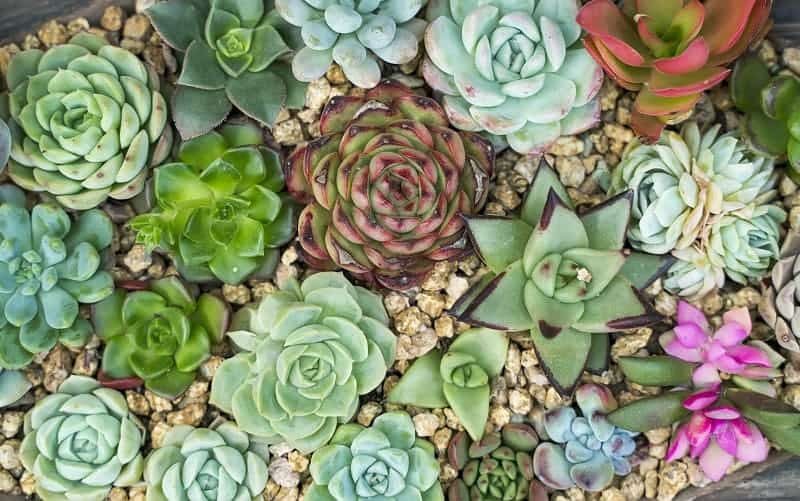
One way that succulents manage to survive through long periods of drought is by developing a tough skin, or cuticle. This touch cuticle prevents the plant from losing water to evaporation. Many species of succulents are also covered in a waxy film called farina, which helps to further protect the plant from water loss. Farina also serves to reflect the bright light of the sun, which can be especially drying during hot weather. Unfortunately, farina is a fragile character that can be permanently removed if it is rubbed off.
Succulents come in a wide variety of shapes and sizes. From the petite Living Stones of southern Africa to the gigantic Saguaro cacti of the southwestern United States, succulents have an immense range. Some species have become particularly popular due to their weird appearances. Some species try to blend into their surroundings, like Lithops, which resemble stones of various colors. Others, like Euphorbia tirucalli ‘Firesticks’, choose to stand out with strange shapes and fiery colors.
Habitat
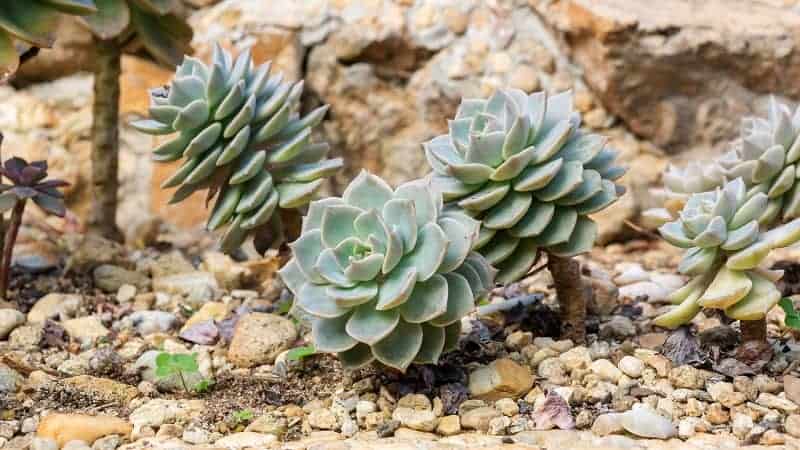
Since succulents are known for their ability to retain water during drought, many people assume that they can only be found in the deserts of the world. However, succulents can actually be found on every continent except Antarctica. They are adaptive plants that can thrive in places where many other plants may not.
Many species of succulents thrive in areas such as seacoasts and dry lake beds. The soil in these areas often have a high mineral content that discourages other types of plants from growing. However, succulents are true survivors and can adapt to living in harsh habitats.
No products found.
While it is true that succulents grow well in inhospitable environments, it should be noted that they do have limits. Many places in Australia and Africa experience seasons with extreme heat and extended periods of drought. These exceptionally dry areas are simply too hot with too little water for even the toughest succulents to survive.
Most species of succulents have adapted to surviving the heat, but very few are frost tolerant. Sempervivum and Sedum are two genera of succulents that have developed the ability to survive frigid winter temperatures. There are also a few species of Agave and Yucca that can handle temperatures below freezing, but most succulents will not survive cold weather unless they are brought inside or protected.
Regardless of species, succulents all share a common need for infrequent water. Some species may be able to handle longer periods of time between water than others, but in general, succulents need less frequent water than other types of plants. In fact, overwatering is the number one reason most inexperienced succulent growers fail to keep their plants alive. Remember, a little neglect goes a long way in succulent gardening.
Succulents vs. Cacti
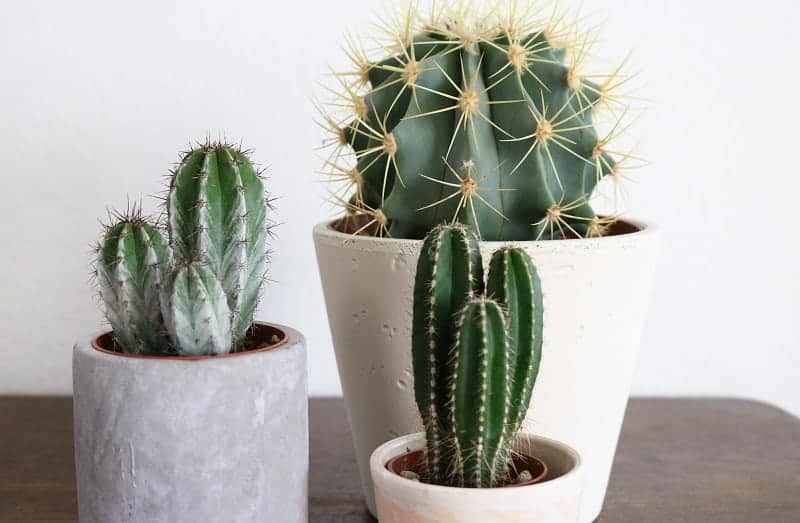
If you’ve ever heard someone use these terms interchangeably, you may be wondering what the difference is between succulents and cacti. They have so many similarities, it can be easy to become confused about how to differentiate one from the other.
Cacti have thick, fleshy stems that retain water and they live in arid climates. This qualifies them as a succulent. No matter what species of cacti you’re talking about, all cacti are succulents. However, not all succulents are cacti. Cacti are simply one group of plants among the many different types of succulent, so the terms ‘cacti’ and ‘succulent’ should not be used interchangeably.
Cacti are different from other types of succulent in both their shape and structure. Cacti do not typically have leaves. Some may have branches, but most do not. Cacti also have areoles on their surface, which are small mounds from which spines, hair, and flowers grow. Some species of succulents may have spines or hair, but if areoles are not present, then the succulent is not a cactus.
Xerophytic and Epiphytic Cacti
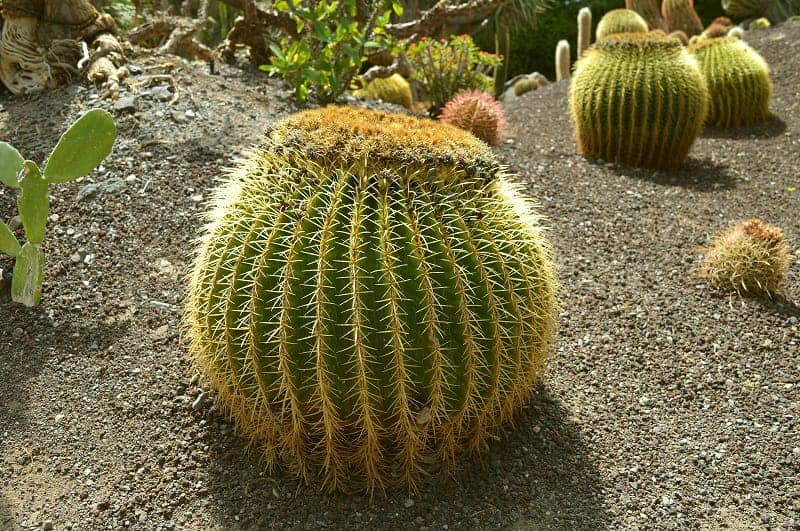
You may hear some species of succulents referred to as either xerophytes or epiphytes, but what exactly do these terms mean? Simply put, xerophytes are plants that can survive on very little liquid water. Cacti are one example of xerophytic succulents. Although succulents generally handle drought well, xerophytes take it to the extreme, sometimes going months at a time without water. However, not all succulents are xerophytes and not all xerophytes are succulents.
Epiphytes are unique from other types of plants in that they do not need soil to survive. Instead, they grow on the surface of other plants. However, it’s important to distinguish them from parasitic plants as they do not derive nutrients from the plant they grow on. Instead, they use the plant for support and protection. Again, not all epiphytes are succulents and vice versa. Rhipsalis and Epiphyllum are common species of epiphytic cacti.
If you’ve read through this information and still aren’t completely sure about whether you can accurately classify a plant like a succulent, you’re not alone. Botanists and horticulturists often have differing opinions on what plants they would refer to as succulents. Accurately classifying plants is a difficult and complicated matter, even for the experts. For the most part, categorizing any plant that retains water in its leaves or stems as a succulent is a pretty safe bet.
You Might Also Like:

